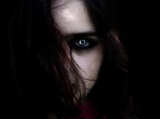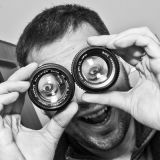- Forum
- Photography and Camera Forum
- Equipment Research, Buying and Using
- Lenses
- Macro... telephoto or wide angle?
Macro... telephoto or wide angle?
Post #36085
“Amateurs worry about equipment, professionals worry about money, masters worry about light, I just make pictures… ” ~ Vernon Trent
-

- Screamin Scott
- Moderator
-
- Nikon D610, Nikon D7100, Nikon D300, Olympus OMD E-M5 MarkII, Olympus OM-D E-M10, Olympus Pen E-P3 + film SLR's
- Followers: 1384
- Posts: 6882
-
Points:
40732
Post #36168
-

- crystal
- Photo Guru
- Nikon D7000
- Followers: 101
- Posts: 3253
-
Points:
75
Post #36215
“Amateurs worry about equipment, professionals worry about money, masters worry about light, I just make pictures… ” ~ Vernon Trent
Post #36300
-

- Yasko
- Photography Hooked
-
- Canon 5D, Canon 30D, Olympus tough P&S
- Followers: 47
- Posts: 805
-
Points:
30
Post #36352
They call this "the poor man's macro", because you can do it for less than 50 bucks if you do it right! Before I got a dedicated macro, I was reversing my prime lenses, and I still do it this way when I want to get really close-up. Here's what you do:
1. Get a used 50mm or 28mm lens. There's tons of used ones still in great condition on used camera gear sites. A great place to get a guaranteed clean used lens is www.keh.com . Canon FD and Pentax lenses are always found there. Both brands have great IQ and are cheap. Example:
www.keh.com/camera/Pentax-Manual-Focus-F...-PK06010700040E?r=FE
Local pawn shops can be a good resource for old primes too. Since brand doesn't matter when reversing lenses, you'll find tons of obsolete brands like Yashica, Petri, Soligor, and Canon FD. They're usually willing to sell them for only a few bucks because they won't fit modern cameras. The important thing to remember when getting a lens to reverse is that it has an adjustable f-stop ring. Modern canon EF lenses don't have one, so they won't work.
2. Once you get your lens, check the screw-on filter size (usually between 49mm and 58mm) and look up a reversal ring on ebay. These usually run between $2 and $10. Make sure it's for canon EOS.
That's it. screw the reversal ring to the filter threads on the lens, and attach to your camera mount. One thing to remember, shoot in aperature priority or manual mode, and you won't have autofocus, but with a little practice you get used to simply moving back and forth to get good focus on your subject. These were all shot with reversed 50mm, 28mm, and 17mm primes.
-

- alley
- Lone Wolf
-
- Canon Rebel xs
- Followers: 20
- Posts: 124
-
Points:
0
- Forum
- Photography and Camera Forum
- Equipment Research, Buying and Using
- Lenses
- Macro... telephoto or wide angle?
Latest Reviews
The Sigma DP2 Quattro is a rare breed. It’s a large-sensor point-and-shoot camera with a 29MP sensor and a 30mm f/2.8 fixed lens. The question is, who is this camera for? Let’s find out!
I’ve been testing the Vanguard VEO 5 264CB-160S for several weeks now, and I have to say that my first impressions are nothing but good. Vanguard has knocked it out of the park yet again!
The Fujifilm X-H2s is Fuji’s flagship hybrid APS-C mirrorless camera. It launched in the summer of 2022 and has been impressing photographers and videographers alike ever since!
The Sony a9 III is a powerhouse professional-grade camera. The question is, should it be the next item in your camera bag? Find out if it’s worth the money in this comprehensive review!
Latest Articles
The Canon EOS R1 was finally released last week, and the question is - does it live up to the hype? Let’s dive in and explore firsthand what this camera does and doesn’t offer.
Improving your photography skills takes time, effort, and dedication. But with these unique exercises, you can make the process of becoming a better photographer more fun, too!
Night street photography is a fun pursuit with opportunities to develop your skills with portraiture, light trails, and architectural photography skills - and your nighttime photography skills, too!
The Canon EOS R5 Mark II has been unveiled, but it has a hefty price tag. If it’s out of your budget, the original Canon EOS R5 is a fantastic option. Learn more about it in this guide!
The Sigma DP2 Quattro is a rare breed. It’s a large-sensor point-and-shoot camera with a 29MP sensor and a 30mm f/2.8 fixed lens. The question is, who is this camera for? Let’s find out!
You need to try unique newborn photography ideas from time to time to keep your inspiration levels up. With the ideas in this guide, you can do just that!
What is the best landscape lens for photography - a prime or a zoom? The answer is a little murky, as it depends on the specific situation. Learn more about these lenses in this detailed guide!
Lightning photography is a tricky beast, but with the right tips, tricks, and tools, you can make the most of the next storm that rolls through. Learn some essential techniques in this guide!


















